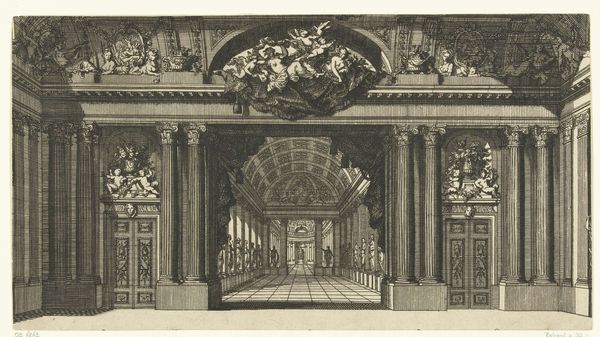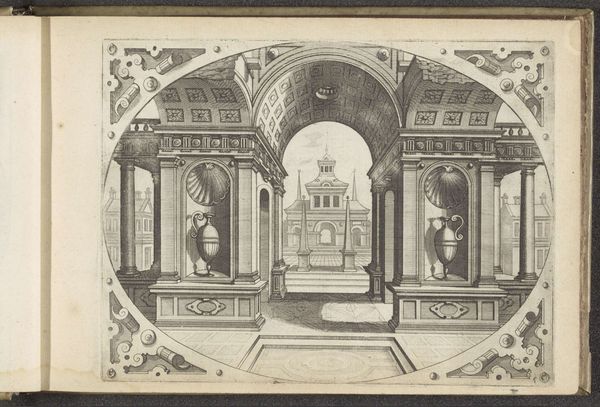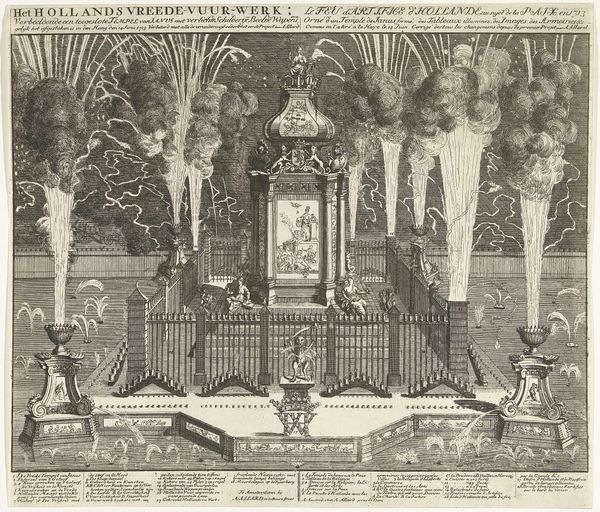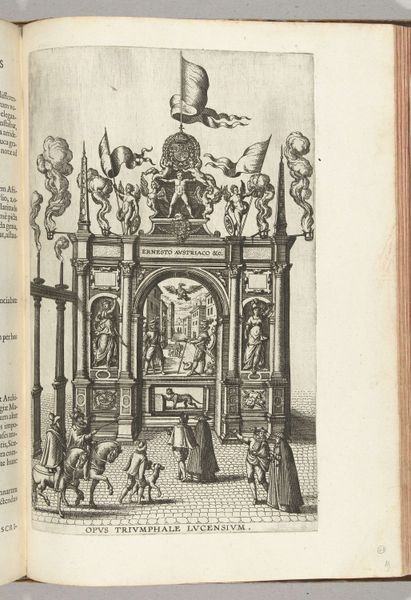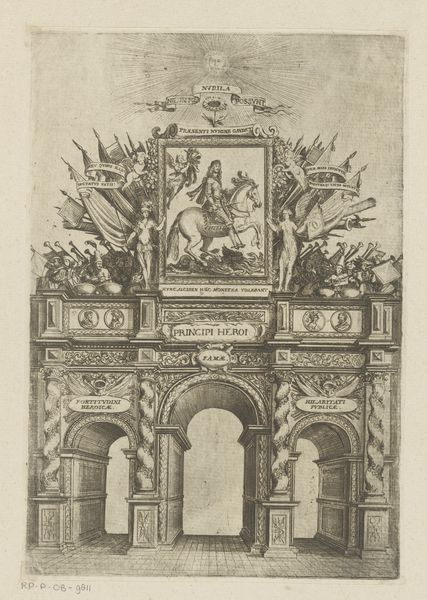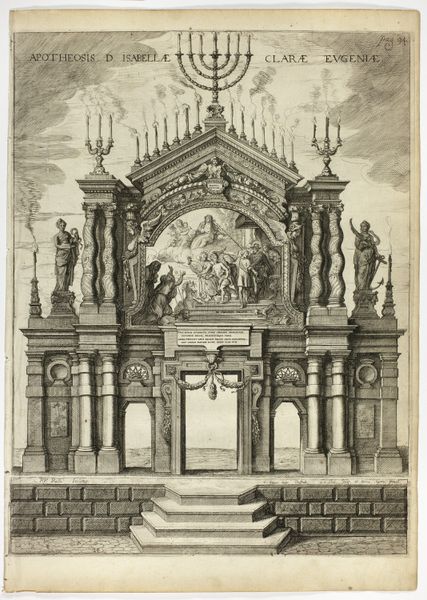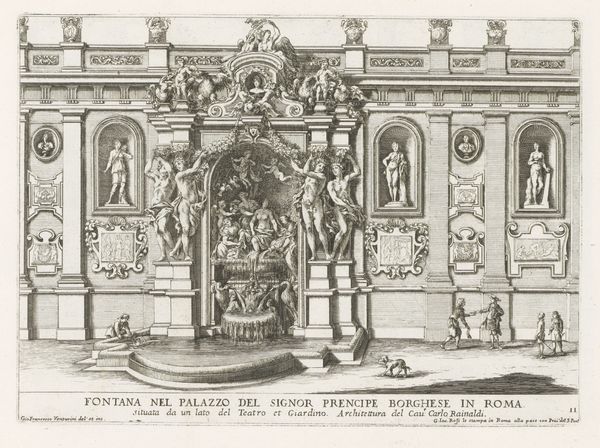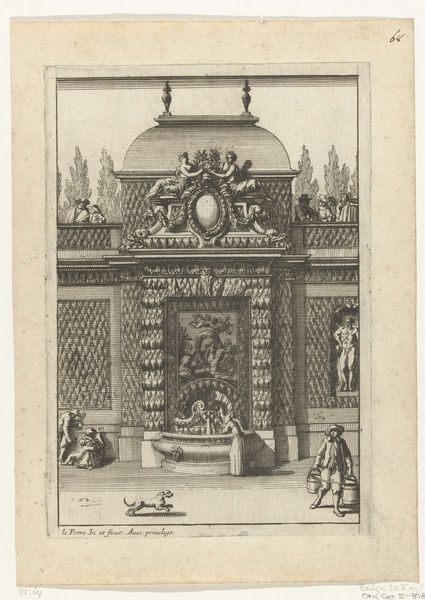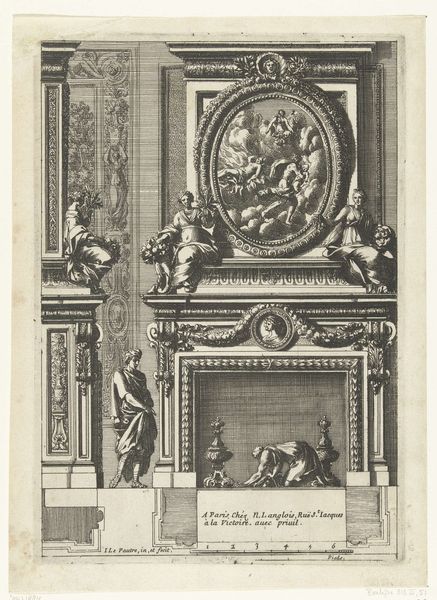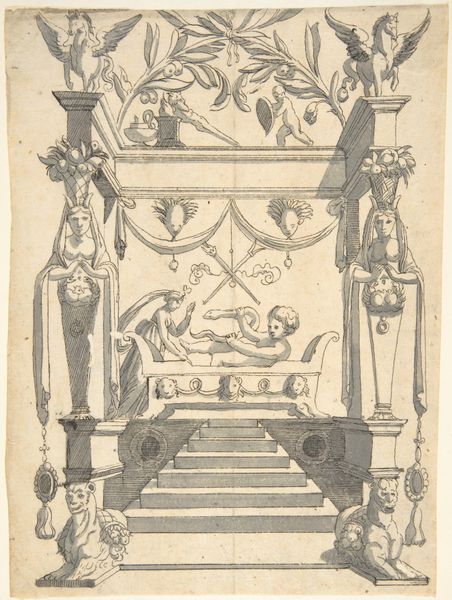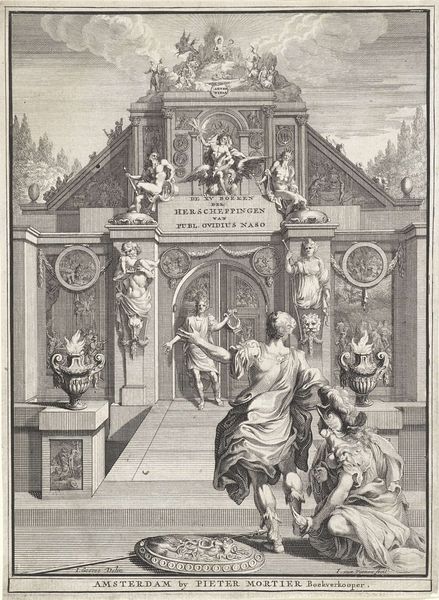
intaglio, engraving, architecture
#
baroque
#
intaglio
#
history-painting
#
engraving
#
architecture
Dimensions: height 113 mm, width 178 mm
Copyright: Rijks Museum: Open Domain
Editor: This engraving, "Ceremonial Entrance to a Church, 1685," by Gaspar Bouttats, is so detailed. It depicts an elaborate entranceway teeming with figures. What strikes me is how every surface seems covered in scenes and decorations. What are your thoughts on it? Curator: Looking at Bouttats’ print, I see an elaborate display of labor and consumption. The Baroque style isn’t just about grandeur, it's a visual record of the resources invested in religious spectacle. Consider the process: the artist, the engraver, the patron, all contributing to this complex representation of faith. Editor: It’s interesting to think about all the labor that went into it, but it looks like it's supposed to appear effortless. The architecture seems incredibly important, would you agree? Curator: Exactly! The architecture isn't just background. The materiality speaks to the wealth and power of the Church, think about the access to expensive materials it evokes. Each layer of decoration required skilled hands and represents tangible economic value. The act of creating, disseminating and viewing, all part of the grand ceremonial performance depicted. Where do you see boundaries between craft and ‘high’ art challenged? Editor: Hmm, the figures and scenes engraved on the panels resemble narrative paintings, typically regarded as high art, yet they function almost as wallpaper, or applied ornament, perhaps blurring that distinction. I also see that engraving as a medium has implications on dissemination. Curator: Precisely! Consider, how does this engraved print, a reproducible object, democratize access to religious imagery, previously limited to monumental architecture accessible by a limited amount of people? Editor: Thinking about it in terms of material and access gives it a whole new dimension. It's no longer just a pretty picture, but also a statement about wealth and the control and access of information and artistic production. Curator: Indeed. This piece invites us to contemplate the systems of production, consumption, and dissemination that shaped both art and belief in 17th-century Europe.
Comments
No comments
Be the first to comment and join the conversation on the ultimate creative platform.
